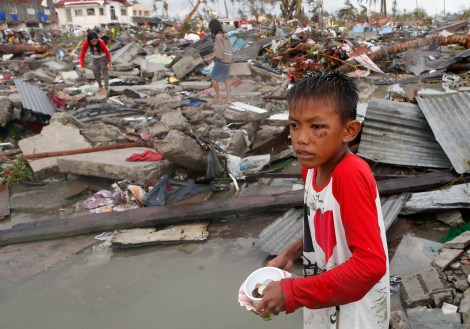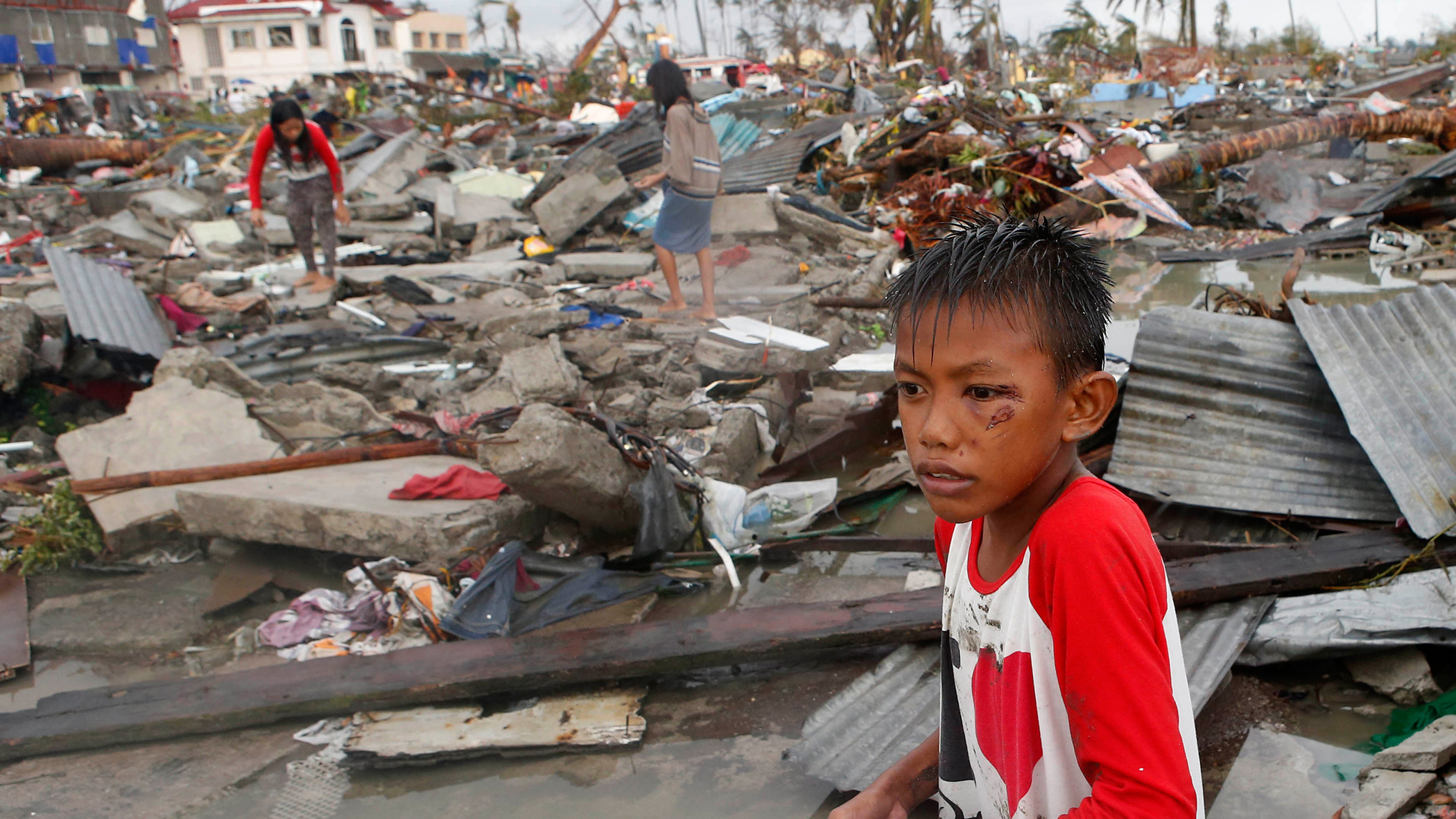
Reuters/Erik De Castro
It’s hard to comprehend the scale of the disaster in the Philippines, where a massive typhoon may have killed more than 10,000 people. But climate delegates who have gathered today in Warsaw, Poland, for a fresh round of U.N. climate talks will need to do just that.
The Philippines is a densely populated, low-lying archipelago state that sits in warm Pacific Ocean waters — and warm ocean waters tend to produce vicious tropical storms. The country’s geography puts its islands in the path of frequent typhoons (typhoon is the local word — Americans call such storms hurricanes and others refer to them as cyclones). The Philippines’ low and unequally distributed national wealth, meanwhile, leaves its populace highly vulnerable to them.
And in terrible news for Filipinos, climate models show that global warming is making typhoons even more powerful.
Meteorologists have blamed a rise in water temperatures of nearly 2 degrees Fahrenheit and other weather conditions last week for stirring up Typhoon Haiyan, which grew to become one of the most damaging storms in world history. Here’s a high-level account of the devastation from Reuters:
“The situation is bad, the devastation has been significant. In some cases the devastation has been total,” Secretary to the Cabinet Rene Almendras told a news conference.
The United Nations said officials in Tacloban, which bore the brunt of the storm on Friday, had reported one mass grave of 300-500 bodies. More than 600,000 people were displaced by the storm across the country and some have no access to food, water, or medicine, the U.N. says. …
Haiyan, one of the strongest typhoons ever recorded, is estimated to have destroyed about 70 to 80 percent of structures in its path.
Officials from the Philippines are blaming climate change for the ferocity of Typhoon Haiyan, and demanding that climate negotiators get serious in Warsaw.
Though climate scientists aren’t ready to attribute the blame quite so directly, there is mounting evidence that climate change is making storms like Haiyan worse. As we’ve explained, the oceans are absorbing much of the extra heat that’s being trapped on Earth by greenhouse gases, which is helping to stoke more powerful tropical storms. Ben Adler recently reported on the results of a study in Indonesia, just south of the Philippines, which found that local ocean waters were warming at a historically unprecedented rate.
“What my country is going through as a result of this extreme climate event is madness,” said Naderev “Yeb” Saño, lead negotiator for the Philippines at the climate talks. “The climate crisis is madness. We can stop this madness. Right here in Warsaw. Typhoons such as Haiyan and its impacts represent a sobering reminder to the international community that we cannot afford to procrastinate on climate action.”
Saño told Responding to Climate Change how the storm had affected his family:
[Saño] spent much of Friday and Saturday wondering if his family had survived Typhoon Haiyan …
“The first message I got from my brother was short, to say he was alive,” he says. “The second was that he had been burying dead friends, relatives and strangers. He said with his own two hands he had piled up close to 40 dead people.”
Sano’s family hails from the part of the Philippines eastern seaboard where the typhoon made landfall, smashing into his father’s hometown.
“I really fear that a lot of my relatives may have suffered tremendously, if they survived at all,” he adds.
This is not the first time Saño has warned the world that it must take action to prevent super-storms from devastating his country and so many others. At the 2012 U.N. climate talks in Doha, Qatar, he broke down in tears during his address, linking climate change to Typhoon Bopha, which killed hundreds of people in his country late last year.
“[W]e have never had a typhoon like Bopha, which has wreaked havoc in a part of the country that has never seen a storm like this in half a century. And heartbreaking tragedies like this is not unique to the Philippines, because the whole world, especially developing countries struggling to address poverty and achieve social and human development, confront these same realities. …
I appeal to the whole world, I appeal to the leaders from all over the world, to open our eyes to the stark reality that we face. I appeal to ministers. The outcome of our work is not about what our political masters want. It is about what is demanded of us by 7 billion people.”
We told you on Friday that climate delegates representing poor and developing countries are begging wealthy countries for financial help — not just for help in reducing their carbon emissions, but also for help in dealing with crazy weather that’s already happening. They say they can’t afford to do it alone, and many of them feel that their countries shouldn’t have to, since the rich nations of the world have pumped so much of the excess carbon dioxide into the atmosphere.
Rich countries have pledged to provide $100 billion in annual climate assistance starting in 2020 via the Green Climate Fund, but they’ve contributed very little so far. “We have not seen any money from the rich countries to help us to adapt,” Saño said. And some delegations in Warsaw are seeking more funding still, to compensate developing countries for the damage caused by climate disasters.
If wealthy nations don’t come through with significant funding, hopes of meaningful global climate cooperation could be doomed. And if the world doesn’t cooperate on climate change, greenhouse gas emissions will keep spiraling up, pushing global average temperatures up more than 2 degrees Celsius (3.7 Fahrenheit) compared with preindustrial times. That would not only mean worse typhoons for the developing world — it would mean worse hurricanes, droughts, fires, and floods in the U.S. and across the world.



